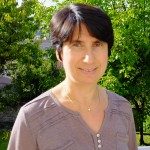Link to Pubmed [PMID] – 8223601
Eur J Biochem 1993 Oct; 217(2): 581-6
The catalytic domain of Bordetella pertussis adenylate cyclase, a calmodulin-activated enzyme with toxic properties, is a modular construct cleaved by trypsin into two subdomains of 224 (T25) and 175 (T18) amino acids. The calmodulin-binding locus of the bacterial enzyme consists of approximately 70 amino acids and overlaps the C-terminus of T25 and the N-terminus of T18. This region, exposed to the solvent or proteases, also exhibits an unusual high flexibility and allows, as demonstrated in this study, reconstitution in the presence of calmodulin of active species of adenylate cyclase from overlapping inactive fragments of the enzyme. Moreover, several combinations of inactive variants of the bacterial enzyme obtained by site-directed mutagenesis can yield active species. Heterodimers, resulting from a few selected combinations of inactive species of adenylate cyclase, exhibit specific activity similar to that of the native enzyme. Productive complementation from inactive fragments is a unique phenomenon among calmodulin-activated enzymes and represents a new and helpful tool in the understanding of the molecular mechanism of activation of B. pertussis adenylate cyclase upon binding of calmodulin.
